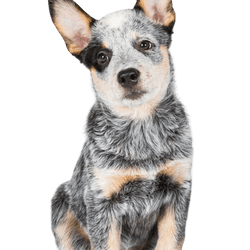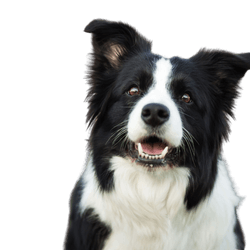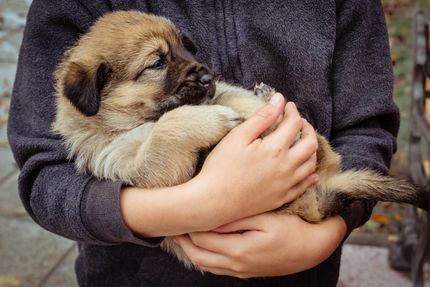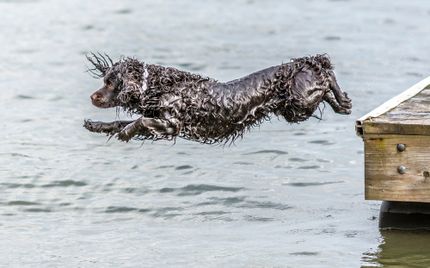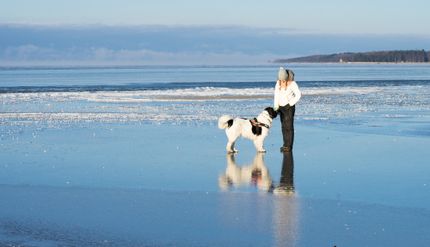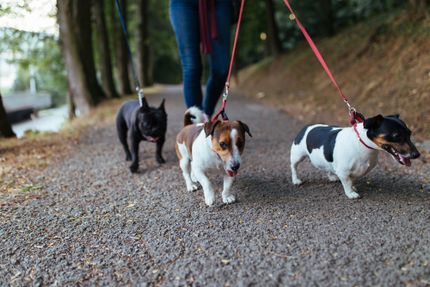Border Heeler:Australian Cattle Dog and Border Collie Mix
Facts & Origin
Border Collie and Australian Cattle Dog Mix - a hybrid breed.
This cross between a Border Collie and Australian Cattle Dog is the perfect herding dog! They are intelligent, loyal and full of energy. These dogs need lots of exercise and training to be happy and well behaved.
What are breed characteristics of this mix dog?
The average Border Collie Australian Cattle Dog mix weighs about large. They have a strong, muscular body and a thick coat. They are medium to large dogs with a long head and muzzle. They have a long tail that is often docked, medium to large ears and a broad chest. They have strong legs and feet.
| Alternate Name | - |
| Origin | Australia - UK |
| Life expectancy | 10 - 15 years |
| Care requirements | low-maintenance - high-maintenance |
| Activity level | average - high |
| FCI group | not recognised |
| AKC group | not recognised |
| KC group | not recognised |
More Australian Cattle Dog mixes
More Border Collie mixes
Attitude, character and temperament of the breed
Possible character traits of Border Collie and Australian Cattle Dog mix - Such is probably his nature.
The Border Collie and Australian Cattle Dog mix is a loyal and protective dog that is great for families. They are very intelligent and trainable and love to please their owners. These dogs are usually good with children and other pets, but can be protective of their family and home. Border Collies are known for their herding instincts, while Australian Cattle Dogs were bred to work with cattle. This mix of breeds makes for a dog that is hardworking and intelligent, but also loving and loyal.
Character
Usage


Health and breeding information
What diseases can occur in Border Collie and Australian Cattle Dog Mix.
The Border Collie Australian Cattle Dog Mix breed is a relatively new breed that has not been fully researched. However, there are some known diseases that this breed can be prone to.
One of the most common health problems in this breed is hip dysplasia. This is a condition in which the hip socket is not properly formed, resulting in pain and lameness. It is important to have your dog examined by a veterinarian if you notice any signs of hip dysplasia, such as stiffness, limping or reluctance to move.
Another condition that has been seen in some Border Collie Australian Cattle Dog mixes is von Willebrand disease. This is a bleeding disorder that can cause persistent bleeding after surgery or injury. If you notice any unusual bleeding or bruising, you should take your dog to the vet immediately.
Although there are some health concerns, the Border Collie Australian Cattle Dog mix is generally a healthy and robust breed. With proper care and nutrition, your dog should spend many happy and healthy years by your side.
What does this mixed breed look like?
The Border Collie Australian Cattle Dog mix has a dense, medium length coat that is black with white markings. The coat is dense and water resistant, making this breed a good working dog for all weather conditions. The coat must be brushed regularly to prevent matting and tangles.
| Fur length | short - medium |
| Fur | - flat coated |
| Ear shape | Standing Ears |
| Tail | fanned out |
| Anatomy | rugged, slim, sporty |
| Size ♀ | 43 - 53 cm |
| Weight ♀ | 12 - 19 kg |
| Size ♂ | 46 - 56 cm |
| Weight ♂ | 14 - 20 kg |
| Suitable For | - |
Known Diseases
Eye infections
Chronic eye infections can be very painful in dogs and can be treated with medication. In rare cases, the cornea must be treated.
Nervous disorders
Nervous disorders are manifested, for example, by disturbances in perception, neurological abnormalities such as tremors, apathy, convulsions, paralysis, tilting of the head, uncontrolled urination and defecation, and behavioural abnormalities.
Numbness
Often occurs in old age.
Eye diseases
Often occur with allergies and intolerances.
Epilepsy
Definition: Dog has epilepsy if, for example, at least two epileptic seizures occur more than 24 hours apart.
FAQ
-
A Border Collie and Australian Cattle Dog mix is a mixed breed dog bred from a Border Collie and an Australian Cattle Dog.
-
A Border Collie and Australian Cattle Dog mix inherits a combination of traits from both parent breeds. However, it is important to remember that each individual dog is unique and may not share all the typical traits of its parent breeds. Common traits of a Border Collie and Australian Cattle Dog mix include intelligence, activity, and loyalty.
-
The history of the Border Collie and Australian Cattle Dog mix is relatively unknown, as it is a relatively new cross. However, both parent breeds have a long and rich history. The Border Collie is a herding dog breed that originated in the border region between England and Scotland. The Australian Cattle Dog is a working breed that was developed in Australia in the 19th century.
-
The requirements for caring for a Border Collie and Australian Cattle Dog mix vary from dog to dog. However, all dogs need exercise, proper nutrition, and lots of love and attention. A Border Collie and Australian Cattle Dog mix probably needs more exercise than most other dogs, as they are both very active breeds.
-
Border Collie and Australian Cattle Dog mixes can be great family dogs when properly trained and socialized. They are intelligent dogs that want to bring a lot of joy to their owners. However, they may not be the best choice for a family with young children, as they can be herding dogs and may try to herd people.
Useful Articles

You can find articles that might interest you in the dogbible blog to match your favorite breed.
Visit our magazineto stay up to date on dog trends.
To find out more, view our Privacy Policy
Find here the breed that suits you and find out what character traits it has. Here you can also learn more about the origin, size and weight of your favorite breeds.
Matching your favorite breed, you'll find articles that might interest you on the dogbible dog blog.
The 10 most beautiful hiking routes with dog in Germany
Safely on four paws through the darkness
Riding a bike with the dog - Forbidden?
Dogs at the wedding - here's how you can incorporate your favorite one
